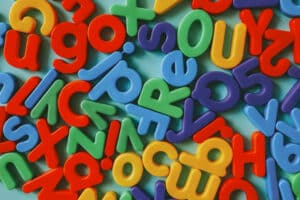
One of the first things you’ll learn when studying most languages is how to say “hello”, and that’s also the case when starting out in any Spanish online courses. Learning how to say “hello” in Spanish is an important first step on your journey, as being able to greet people is one of the fundamentals of communicating in a different language and culture.
You might already know that “hola” is the word for “hello” in Spanish language. However, saying “hello” in Spanish is about much more than just one word. There are many different ways in which you can greet people, and these vary depending on who you’re speaking to, depending on what context you’re speaking to them and even depending on the time of day of the conversation.
The way in which you say “hello” in Spanish can set the tone for an entire conversation, making it vital to understand these nuances. So, in this blog post, we’ll explore the various ways to say “hello” in Spanish language and culture, so that you understand exactly how to introduce yourself no matter the setting.
Let’s firstly establish that you can always say “hello” in Spanish by saying the word “hola”, which is the exact translation from the English words “hello”. As for how do you spell “hello” in Spanish and how do you pronounce “hello” in Spanish, it’s a very simple word which is spelled “H-O-L-A” and which is pronounced as it reads, like “ow-lah”, with very little emphasis on the “h”.
With “hola”, this is such a common and generic word that it will be understood and accepted in almost every social situation. That said, you’ll probably want to introduce yourself and greet someone by using more than just one word.
One way to follow on from the initial “hola” is to add a “buenos días”, “buenas tardes” or “buenas noches”, which are time-specific greetings that are a little more formal. You can see their exact translations and pronunciations below.
| English spelling | Spanish spelling | Spanish pronunciation |
| Good morning | Buenos días | Bweh-nos dee-ahs |
| Good afternoon | Buenas tardes | Bweh-nas tar-des |
| Good evening/night | Buenas noches | Bweh-nas noh-ches |
There are a couple of important points to note in terms of how and when to use these greetings. The first one, “buenos días”, would literally translate to English as “good day”, but it is generally used to mean “good morning”. It is also the only one of the three where the noun is masculine, hence the use of “buenos” instead of “buenas”. As for what time of day to say each greeting, “buenos días” can be used up until around lunchtime, while “buenas tardes” can be used from midday to dusk, after which “buenas noches” would be the preferred option.
While the use of “buenos días”, “buenas tardes” and “buenas noches” is ideal for slightly more formal situations, there are even more formal phrases for saying “hello” in Spanish language. Let’s look at a few examples.
By adding “señor” for a man or “señora” for a woman, this adds an extra layer of formality and politeness to the greeting we looked at above.
When meeting somebody for the first time, you might wish to express your delight at getting the chance to know them. In a formal setting, this can be done in the above way, using “conocerle” rather than the more informal “conocerte”.
Of course, it’s common to ask somebody how they are when you greet them, in Spanish and in any language. If doing so in a formal way, you’d say “¿cómo está usted?”.
When it comes to saying “Hello, my name is…” in Spanish, this can also be done in a formal or informal way. In a formal setting, you would say it very matter-of-factly with “mi nombre es Oscar”, for example.
Of course, you won’t always be meeting people in formal settings. If you decide to learn Spanish in Madrid, keen to enjoy in-person instruction and other gap year advantages, you’ll often be speaking Spanish in informal situations, in casual encounters between peers or friends. In these circumstances, it can sound a little off to introduce yourself so formally. So, let’s take a look at a few informal ways to say “hello” in Spanish.
A very common greeting in Spain is “¡Buenas!”, which is a shortened and more enthusiastic way to say the same thing as “buenos días”, “buenas tardes” or “buenas noches”.
Rather than forming a full sentence to tell somebody that it’s nice to meet them, a common and more informal way to say this in Spain is to say “¡Encantado!” if you are a man, or “¡Encantada!” if you are a woman.
Even in more casual contexts, you’ll likely still want to ask the person how they are. Rather than the more formal expression for this which was outlined above, you can simply say “¿que tal?” to ask somebody “how’s it going?”.
When stating your name in an informal setting, the most common phrase to use is simply to say “Soy XXX”, meaning “I am XXX”. This is a relaxed way to introduce yourself and to kick off a conversation in Spanish.

